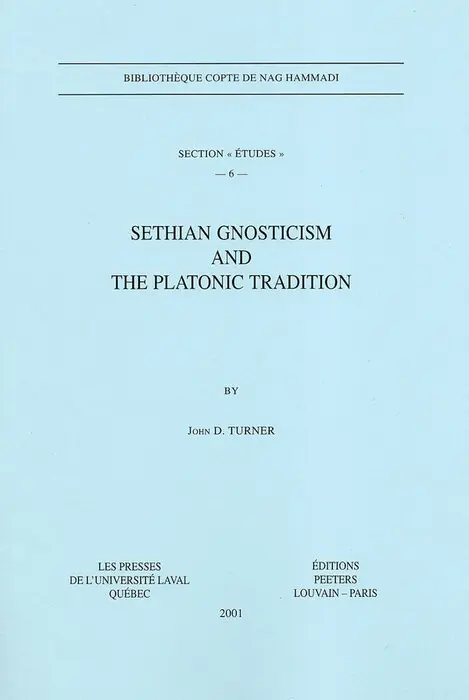
Sethian Gnosticism and the Platonic Tradition
Turner J.D.
Год :2001 Количество страниц :842 [859] Язык :Английский Категория :Исследования Скачать : PdfПоддержать :
No less than eleven of the fifty-three treatises of the Nag Hammadi Library fit the designation ‘Sethian Gnostic’. They reveal the existence of a hitherto unrecognized religious competitor of early Christianity. With its own roots in second temple Judaism and in various first and second century sectarian baptismal movements, Sethian Gnosticism is now the earliest form of Gnosticism for which we possess a great deal of textual evidence. Like the Christian school of Valentinus (120-160 CE) and his followers — which it seems to antedate — Sethianism not only allied itself with the early Christian movement, but was also vitally indebted to the (Middle) Platonism of the first three centuries, even to the point that several of its theological treatises became the subject of scrutiny in Plotinus’ third century Roman seminars. Although this book provides commentary on and analysis of the entire corpus of Sethian literature and goes on to develop a history of this movement and its literature and ritual practice in the first three centuries, its main focus is upon its striking engagement with the Platonic metaphysics of the second and third centuries, especially evident in four of its most distinctively Platonizing treatises, Zostrianos, Allogenes, The Three Steles of Seth, and Marsanes. These treatises have profound implications for understanding the origins of Neoplatonism, including its theory of dynamic emanationism, certain aspects of Plotinus’ thought, and the Middle Platonic interpretation of Plato’s dialogues, especially the Parmenides. Accordingly, Sethian Gnosticism and the Platonic Tradition is divided into five sections: an introductory discussion of the scholarly attempts to characterize the relation of Gnosticism and Platonism, followed by three main sections: Part One, an analysis and history of Sethian literature, mythology, and ritual practice in its pre-Christian, Christian, and post-Christian phases; Part Two, a survey of the development of Platonic metaphysics from Plato to Theodore of Asine; and Part Three, an extensive analysis of the four Platonizing Sethian treatises and their implication for the history and development of Middle and Neoplatonic metaphysics. The final section offers a concluding overview of the Sethian religion.





